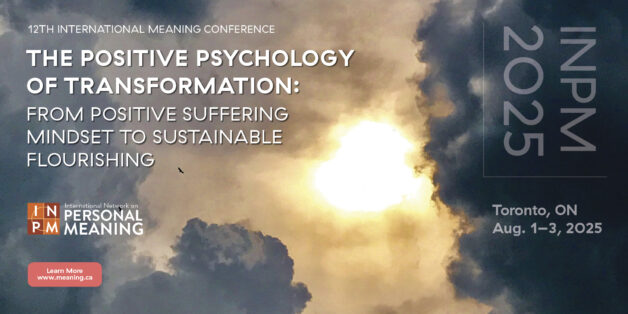Every organization wants to see its members perform at an optimal level and enjoy a high level of personal satisfaction and well-being. But how can they achieve this ideal?
Let’s consider two academic departments in a prestigious University. Both departments share the high performance culture of the University, and both are well known for their scientific contributions. However, the similarity ends here.
Department “A” has the reputation of being a high-pressure and ruthless place to study and work. The chairman is a mean-spirited, demanding taskmaster. There is constant intense competition within the department. Its graduate students feel that they are working with a sword over their heads. In the last five years, three graduate students have committed suicide. The turnover rate of professors in the department is also high.
In contrast, Department “B” has the reputation of being a very stimulating and pleasant place to work. The chairman is a very caring mentor. Everyone in the department is treated equally with dignity and respect and there is a real sense of cooperation and community. The prevailing attitude is that no external pressure is necessary because their graduate students are a very selected group of very gifted and highly motivated individuals. Both professors and graduate students enjoy the positive, supportive climate in the department.
Similar comparisons can be made between organizations and business firms. The observation is always the same: optimal performance is more likely to happen in a positive, meaningful work place than in a negative, oppressive work environment. What makes the difference is the work climate!
Climate Management
The main thesis of this paper is that competence in “climate management” is just as important as competence in technological knowledge in improving productivity and work satisfaction.
“Climate management” differs from traditional ways of motivating workers, because it attempts to address the basic human needs for personal significance and meaning from a collectivistic, holistic perspective. According to this approach, the most effective way to produce a highly motivated, dynamic and enthusiastic work force is to create a positive, meaningful work climate.
Work climate refers to the psychosocial aspects of the work environment as perceived by the workers, reflecting the “chemistry” of an ensemble of individuals working together. Within the organization different departments may have a different kind of work climate, but there is also an overall work climate.
The two arms of climate management are: (a) creating a positive workplace and (b) creating a meaningful workplace. The “positive” arm is concerned with how workers feel about themselves, their co-workers, the administration and the organization, and how well people work together. Its main focus is on the psychosocial aspects of organizational life. A positive workplace means that the organization is an enjoyable, pleasant place to work because people get along well and treat each other with respect.
The “meaningful” arm is concerned with the ethos, the leitmotif of the organization – what makes it “tick” and what really drives it. Its main focus is on the existential, motivational aspects of organizational life. A meaningful workplace means that the decisions of the administration make sense and that the work being done is meaningful. Together, these two arms of climate management will enhance job satisfaction and productivity.
Climate management represents a paradigm shift – from self-centeredness to considerations of others, from self-interests to a higher purpose, and from individualist to a collectivist orientation. Simply stated, climate management aims at creating a positive, meaningful climate through humanizing the work place.
The single greatest threat to business success or organizational health is internal strife, whether it is due to pretty jealousy, turf-fight or cultural conflict. Internal strife drains emotional energy, reduces productivity, and makes the workplace very unpleasant. Money, perks and rewards on the basis of individual performance may have the undesirable side effect of creating conflict among workers.
In contrast, climate management emphasizes that creating a positive, meaningful climate is everyone’s business. It requires the intentional, conscious efforts by all workers. The overriding motive is that such a work climate is good for everyone, from the management to part-time employees.
Management needs to set the tone and introduce policies and practices that contribute to the creation of a positive, meaningful climate. People need to be educated that a positive group dynamic does not happen spontaneously; synergy in a team does not occur spontaneously. It requires knowledge and effort.
For example, treating people with respect and dignity, and doing everything with complete honesty and integrity are just some of the practices that will contribute to a positive, meaningful work climate. But to implement such practices on a daily basis throughout the whole organization requires a clear vision and complete commitment from senior management and all employees.
The Seven Dimensions of a Positive Workplace
A number of authorities on management have emphasized the linkage between a company’s social climate and its business success. They have presented a convincing case that the quality of an organizations life is related to its ability to achieve great things at work.
A positive work climate is not a fun-filled place, a lot of warm fuzzy stuff or a place for relaxation; it is a positive, supportive climate which is conducive to creative, productive work; it is a cooperative, civil workplace that is relatively free from bad mouthing, back-stabbing or petty bickering.
On the surface, work climate may be characterized by several descriptors such as (a) Unfriendly – Friendly, (b) Unhappy – Happy, (c) Cold – Warm and (d) Unsatisfied – Satisfied. But these are superficial indicators, which do not tap into the underlying dimensions of the work climate.
On the basis of available management literature, I propose that there are at least seven underlying dimensions: (a) Controlling – Empowering, (b) Oppressive – Supportive, (c) Secretive – Open, (d) Suspicious — Trusting, (e) Disrespectful – Respectful, (f) Divisive – Unifying; and (g) Political – Professional.
The last dimension requires some explanation. Being political means that decisions are made and actions are taken on the basis of power, personality, and connections, whereas being professional means that decisions and actions are guided by principles, processes, reasons, and group interests.
When incompetent and insecure bosses repeatedly make irrational, stupid decisions that hurt the company for no other reason than flexing their own muscles, we can be assured of reduced morale and productivity. When promoting is based on loyalty to the boss, rather than competence and contribution, again, job satisfaction and productivity will decline. That is why in many ways, a highly political environment is a very unhealthy workplace, where everyone is walking on eggshells, and no one wants to do anything that may get them into trouble.
There are right and wrong ways of creating a positive workplace. Some hierarchical organizations try to maintain a positive climate by expelling anyone who dares to question the management and silencing all those who have real grievances. The message to the workers is, “Just do what you are told, and don’t ask any questions; if you listen to us and do a good job, then we will reward you. But if you question our decisions or policies, then you better get a job elsewhere, and we don’t care how talented and productive you are.”
This controlling and oppressive approach will not succeed in creating a positive climate, no matter how many “spin doctors” the management hires for the Human Resource Department, no matter how many perks they offer to the workers. On the contrary, this kind of heavy-handed, manipulative approach will only demoralize the workers and create a climate of fear, distrust, and resentment.
The right way of creating a positive climate is to reinforce practices and attitudes that demonstrate empowerment, support, openness, trust, and respect for the individual, unity and professionalism. There are specific actions to boost anyone of these seven values. For example, if the administration is serious about empowerment, it should stop trying to micro-manage everyone, and give people the responsibility and power to make decisions in their domain. To foster such a climate requires sustained, system-wide commitment to these values, starting from the Senior Administration. However, the payoff will be great, because nothing is more rewarding to the gifted workers than a positive, supportive work climate that allows them to develop their full creative potential. Furthermore, an organization is more likely to become organic and synergic if everyone practices the seven values.
Many organizations have been dysfunctional for so long that the determination to embrace the seven positive values may not be sufficient. Given the depth of injury and mistrust, senior administration needs to begin with apologies and amends in order to demonstrate their sincerity for reform. We cannot just conveniently turn a new page and pretend that all the mistakes and injustices committed by senior management never happened. Healing is needed when there are so many workers who have been abused and wounded psychologically by the management. Renewal is more likely to happen when there is forgiveness and reconciliation.
The Seven Pathways to Meaning
There is a meaning crisis in business as well as in life. This meaning crisis is twofold: cognitive and existential. With respect to cognitive meaning, the workers want to make sense of what is happening around them, and what is being done to them. Implementation of the seven values of positive workplace will take care of the need for cognitive meaning. For example, when there is complete “openness” in decision- making and communication all workers will be able to know what is happening in the workplace, and whether the decisions make good sense.
With respect to existential meaning, more and more workers want to have a sense of meaning and purpose for what they do. They will be more enthusiastic about their work when they know that their work is meaningful
My research has shown seven pathways to meaning that can be readily applied to management and leadership:
- Achievement – Challenge workers to achieve and celebrate every small success.
- Acceptance — Accept everyone’s limitations and weaknesses with grace.
- Relationship — Build a sense of bonding and community.
- Intimacy — Be sensitive to workers’ need to develop intimacy and care for the family.
- Self-transcendence — Model the practice of transcending self-interests in order to serve others
- Religion/spirituality — Recognize the legitimacy and importance of religious and spiritual pursuit
- Fairness — Treat workers with equality, justice and fairness
These seven pathways appear to be universal, because our current research with samples in India, Korea, Japan and China has indicated that these sources of meaning are present in all these Asian countries, even though each country also has its own unique path to meaning.
The human need for personal meaning and significance is pervasive and strong; therefore, meaning fulfillment can be a powerful motivator. Organizations that meet these needs will have a very motivated, enthusiastic work force.
I have presented the positive psychology of climate management as a promising alternative to the traditional ways of generating optimal performance. The appeal of climate management is that it seeks to address the basic human need for personal significance and meaning, which transcends culture and geography. Climate management also favours a collectivist approach, emphasizing the importance of working together and caring for each other. Therefore, management competent in climate management seems to have an advantage in a multicultural or cross-cultural context


 Meaning Conference 2025 will be the INPM’s first in-person conference with a virtual option after the pandemic.
Meaning Conference 2025 will be the INPM’s first in-person conference with a virtual option after the pandemic.